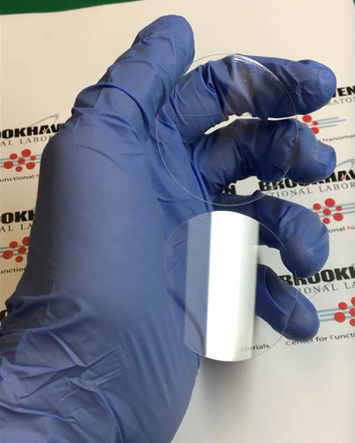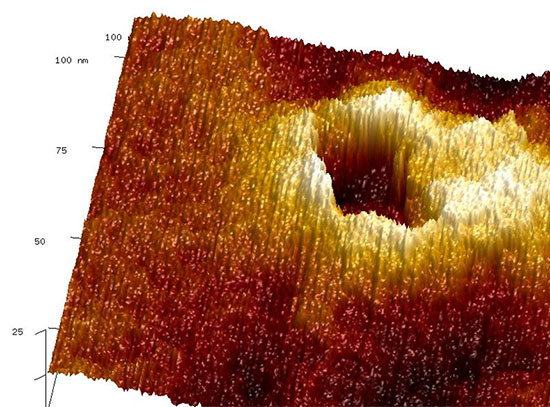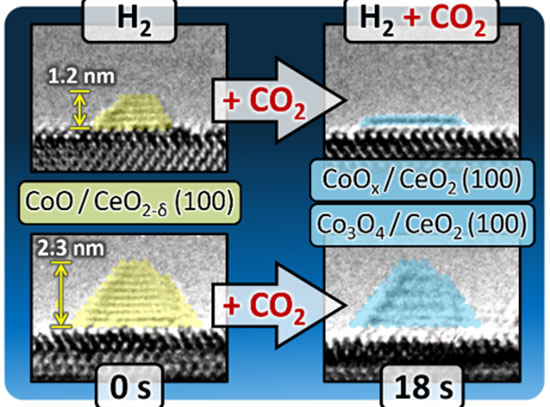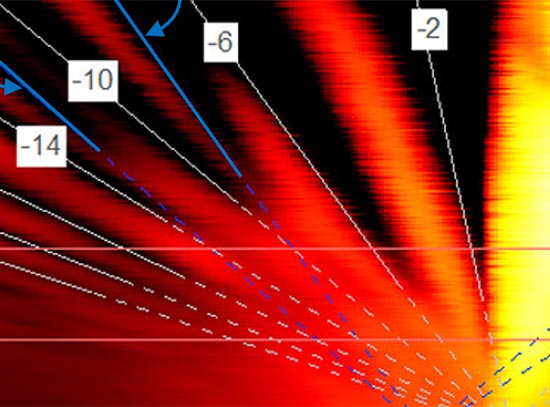Can you see the invisible glass?
November 20, 2017
What is the scientific achievement?
Self-assembled surface nanotextures reduce light reflections from glass windows to less than 0.2% across the entire visible and near-infrared spectrum, which renders the glass essentially invisible. Silicon solar cells encapsulated with ‘invisible glass’ outperform conventional devices by eliminating all reflection losses. These ultra-transparent windows also withstand three times higher optical power than commercial broadband antireflection coatings.
Why does this achievement matter?
These ultra-transparent windows are useful for enhancing the user experience of consumer devices, improving solar cell performance, and enabling higher-power, pulsed laser applications.
What are the details?
 enlarge
enlarge
Photograph of a person holding a piece of regular glass (lower), which shows the reflection of an overhead fluorescent light. A similar piece of 'invisible glass' (upper) does not reflect the overhead light and remains completely transparent.
CFN Capabilities:
These ultra-transparent windows are useful for enhancing the user experience of consumer devices, improving solar cell performance, and enabling higher-power, pulsed laser applications.
Publication Reference
A. C. Liapis, A. Rahman, and C. T. Black, Self-assembled nanotextures impart broadband transparency to glass windows and solar cell encapsulants, Applied Physics Letters 111, 183901 (2017).
Making Glass Invisible: A Nanoscience-Based Disappearing Act (BNL)
Nanotextured glass becomes 'invisible' (C&EN)
Nanoscale textures make glass invisible (UPI)
Nanoscale etching renders glass almost invisible (E&T)
'Invisible glass' could solve smartphone glare problem (The Economic Times)
Scientists may have found a way to make glass virtually invisible (The Irish News)
Spiky cones make glass virtually reflection-free (New Atlas)
Acknowledgement of Support
This research used resources of the Center for Functional Nanomaterials, which is a U.S. DOE Office of Science User Facility, at Brookhaven National Laboratory under Contract No. DE-SC0012704.
2017-12634 | INT/EXT | Newsroom









